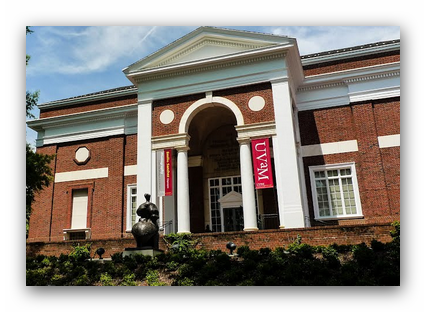May 18 2018 - Sep 30 2018
Fralin Museum of Art at the University of Virginia
Charlottesville, VA
Landscape painting was first seen in the Minoan frescoes of Crete around 1500 B.C. and was generally used as decoration, adding views of the Mediterranean landscape to interiors where there were none. The “landscape” eventually became a common genre in western painting, understood as a window onto the world thanks to thinker Leon Battista Alberti and his ideas about the picture plane known as ‘Alberti’s Window’. After the Industrial Revolution, however, modern art erupted with the landscape’s inversion: the interior. Notably, modern artists began depicting windows into other rooms instead of painting views of the outside world. This subject was made particularly famous by masterworks like Henri Matisse’s The Red Studio (1911) and Vincent van Gogh’s Bedroom at Arles (1888).
What was behind this desire to flip the visual narrative? The theories of psychoanalyst Sigmund Freud and the examination of an “inner voice,” the radical expansion of leisure time among the middle class, the atrocities of war and their resulting psychological damage, and more led modern artists, from the Symbolists to the Post-Impressionists, to paint visually and psychologically stimulating spaces.
Artists continued to paint indoor spaces throughout the 20th century for a variety of psychological, interpersonal, and biographical reasons. Architecture, design and the still-life inform the paintings in this show, as does the persistent theme of the artist’s studio. Further still, the exhibition raises myriad questions upon which to reflect and will address how representations of interior spaces have changed and evolved over time. Also of interest is the question of whether social and political events in the world-at-large affect representations of a space or whether the presentation of space is more indicative of the artist’s mind or state-ofmind. For example, why and when do artists present documentary style inventories of their immediate surroundings and, conversely, why and when do they create fantastic or imaginative interiors?
Interior spaces, unpeopled, allow us to imagine our own physical bodies in the space as well as our emotional and intellectual responses to how we feel when looking at that space. Invited, welcomed, voyeuristic, apprehensive or hesitant to enter: these interiors perhaps reveal more about us, the viewer, than they do about the painter’s intent.
Credit: Exhibition overview from museum website
Exhibition Venues & Dates
May 18 2018 - Sep 30 2018
Fralin Museum of Art at the University of Virginia
Charlottesville, VA
